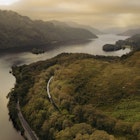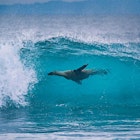
Dec 18, 2025 • 9 min read
From cultural adventures in and around Cairo to hot-air balloon rides in Luxor, here's our guide to Egypt's very best experiences.

Dec 18, 2025 • 9 min read
From cultural adventures in and around Cairo to hot-air balloon rides in Luxor, here's our guide to Egypt's very best experiences.

Dec 18, 2025 • 6 min read
Budapest’s seventh district, once home to a flourishing Jewish community which languished for decades after WWII, has emerged as one of the best bar…

Dec 18, 2025 • 7 min read
Getting around the country of Belize can be an adventure in itself. Here are our top tips for a successful journey.

Dec 18, 2025 • 4 min read
If you’re looking for the best time of year to visit Sedona, we've got the perfect seasonal guide to the weather and the best things to do.

Dec 18, 2025 • 5 min read
Take a mini beach getaway from Barcelona by heading to one (or all!) of the beaches on our list.

Dec 18, 2025 • 15 min read
A visit to Antarctica is a once in a lifetime experience. Here’s how to plan for the trip, including itineraries, insider tips and the best ships to sail on.

Dec 18, 2025 • 6 min read
The volcanic Cycladic island of Milos is much-loved for its luminous waters, secret beaches and authentic Greek charm. Here's what to do when in Milos.

Dec 18, 2025 • 4 min read
Learn about Iran's rich history and culture through these books, films and songs.

Dec 18, 2025 • 4 min read
Put these books, movies and music on your playlist before going to Portugal, plus what to pack and a local glossary.

Dec 18, 2025 • 12 min read
Here are 15 of our favorite things to do in Eastern Europe.

Dec 18, 2025 • 6 min read
Here's everything you need to know about the Caledonian Sleeper, including buying tickets and food, and enjoying the facilities.

Dec 18, 2025 • 13 min read
In Europe, the next great adventure is always just a quick ferry, train ride or flight away.

Dec 18, 2025 • 14 min read
South America is one epic ride.

Dec 18, 2025 • 5 min read
Greece's second-largest city is steeped in history, but it's also full of new and exciting restaurants, art spaces, bars and shops.

Dec 17, 2025 • 7 min read
From glorious island beaches to rugged hikes to intriguing cultural sites and traditions, these places represent the best Sardinia has to offer.

Dec 16, 2025 • 9 min read
Paradise awaits in the BVIs, a sailing hot spot that’s surprisingly down to earth. Here’s everything visitors need to know.

Dec 16, 2025 • 11 min read
Most visitors find the BVIs is wonderfully free of pretense, despite their tony reputation. Here are some top ways to enjoy these fabulous islands.

Dec 16, 2025 • 6 min read
Along Tunisia’s 1400km-long coastline, giant beach resorts abound. Here are five intriguing Tunisian beaches that will take you away from the crowds.

Dec 16, 2025 • 13 min read
From Yosemite to Joshua Tree, California boasts more national parks than any other state, as well as a bevy of national forests, seashores and monuments.

Dec 16, 2025 • 4 min read
Bone up on New Orleans' culture with recommendations on what to read, watch and listen to, plus packing tips and a glossary of local terms.

Dec 16, 2025 • 9 min read
Located between Norway and the North Pole, Svalbard feels like the edge of the world – and that's the appeal. Get all the details you need to plan a visit.

Dec 16, 2025 • 8 min read
Funken Lodge was designed with comfort in mind. Here's what you should know about this respite from the snow and polar air.